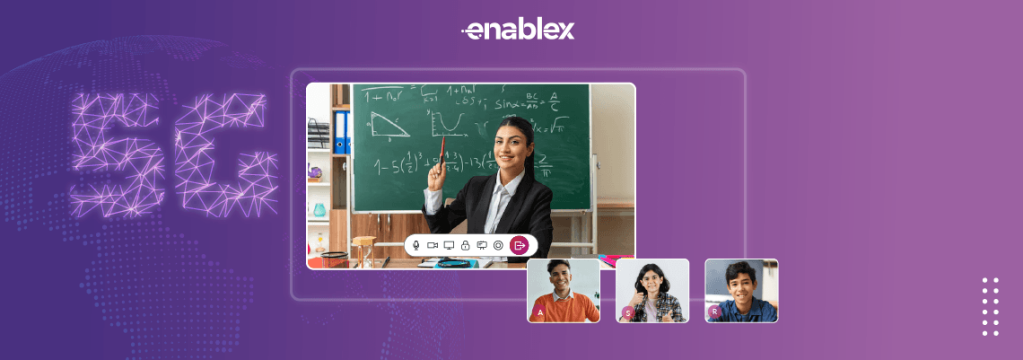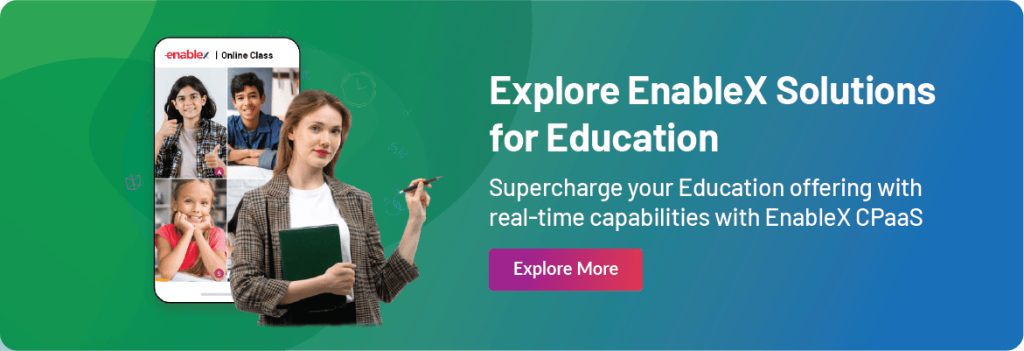Introduction
The world of education has undergone a rapid transformation, driven by technological advancements that are reshaping the way we learn and teach. One of the most promising technological developments in this space is the fact that 5G has improved the availability and quality of connectivity which in turn ensures delivery of remote/virtual education through better communication capabilities including Video, Voice and real time notifications.
The adoption of EdTech has reportedly boosted the achievement rates of students preparing for competitive exams, elevating it from a mere 1% to a promising 7%. With over 4,500 EdTech companies serving the educational needs of more than 300 million school students, the sector has consistently demonstrated growth and favorable outcomes.
According to GlobalData’s ‘Tech in 2030′ report, there is a forecasted increase in global edtech earnings, with revenues projected to surge from $226.4 billion in 2022 to $538.5 billion by the year 2030. These figures clearly highlight the benefits derived from 5G for the education sector.
5G use cases for EdTech
- Enhanced Virtual Classrooms:
- Real-time Interactive Learning: Video-based CPaaS suite integrated with 5G enables seamless real-time interactions between students and teachers, regardless of their physical location. This facilitates live Q&A sessions, collaborative projects, and instant feedback.
- Immersive Virtual Reality (VR) and Augmented Reality (AR): 5G’s low latency and high bandwidth support immersive experiences in education. Students can take virtual field trips, explore historical events through AR, or engage in hands-on learning through VR simulations. In addition, IoT-enabled devices such as interactive whiteboards, smart projectors, and sensor-equipped furniture transform traditional classrooms into interactive, data-rich environments.
- 5G-Enabled Remote Learning:
- Mobile Learning Apps: Using Communication API’s, developers can create powerful remote learning mobile applications for educational institutions that provide students with on-the-go access to lectures, assignments, and communication with peers and instructors. With reminders, on demand video lessons and interactive live streaming, educational experiences can be made available anytime, anywhere.
- School Safety and Security:
- IoT-Enabled Campus Security: 5G enables the deployment of IoT devices for campus safety, including smart cameras, access control systems, and emergency alert systems.
- Collaborative Research and Global Connections:
- International Collaboration:Students and researchers can collaborate with peers from around the world, fostering cross-cultural understanding and facilitating joint research initiatives.
Benefits of CPaaS and 5G in Education
- High-Speed Connectivity: One of the foremost advantages of 5G in education is the lightning-fast internet connectivity it provides. With data speeds that can reach up to 100 times faster than 4G, students and educators can enjoy uninterrupted access to online resources, virtual classrooms, and digital libraries. This rapid connection ensures that students can engage in bandwidth-intensive activities like streaming lectures, participating in video conferences, and downloading educational materials without delays.
For example, a high school student conducting a virtual chemistry experiment in real time, manipulating molecules and observing reactions from home. With 5G’s lightning-fast internet speed, students can seamlessly engage with immersive virtual labs, promoting hands-on learning experiences that were once limited to the physical classroom. - Low Latency: This feature is pivotal for real-time interactions, which are essential for virtual classrooms and remote collaboration. Video conferences become more immersive, and students and teachers can engage in live discussions with minimal delays, fostering a sense of presence and enhancing the quality of online education. For example, using virtual canvases and drawing tools, students receive instant feedback and guidance, fostering creativity and improving their artistic skills through interactive lessons with minimal lag.
- Enhanced Remote Learning: 5G breaks down geographical barriers by enabling high-speed internet access in remote and underserved areas. This has a profound impact on remote learning, making quality education accessible to students who were previously limited by their location. With 5G, remote learners can participate in virtual classrooms, access educational resources, and connect with educators from anywhere in the world.
- Augmented Reality and Virtual Reality (AR/VR): 5G’s exceptional bandwidth and low latency are a perfect match for immersive technologies like augmented reality (AR) and virtual reality (VR). These technologies are revolutionizing education by providing interactive experiences, virtual field trips, and hands-on simulations. Students can explore historical sites, dissect virtual organisms, or travel through space, all from the comfort of their classroom or home.
Conclusion:
In conclusion, CPaaS and 5G have the potential to revolutionize education by bridging the digital divide and providing inclusive, high-quality learning experiences for all. From enabling seamless remote learning to fostering EdTech innovation and collaboration and facilitating global education initiatives, these technologies are reshaping the educational landscape.
To realize this transformative potential fully, there must be increased investment in CPaaS and 5G infrastructure and accessibility, especially in underserved regions. Governments, educational institutions, and technology companies must come together to ensure that no student is left behind and that every learner has the opportunity to thrive in the digital age. By harnessing the power of CPaaS and 5G, we can pave the way for a brighter and more equitable future in education.
If you are looking to build a next generation EdTech platform, or just want to bolster your existing offering, please contact us here. You can also start a free trial account here, and add live video calls, SMS and WhatsApp messaging, or even voice API solutions!



